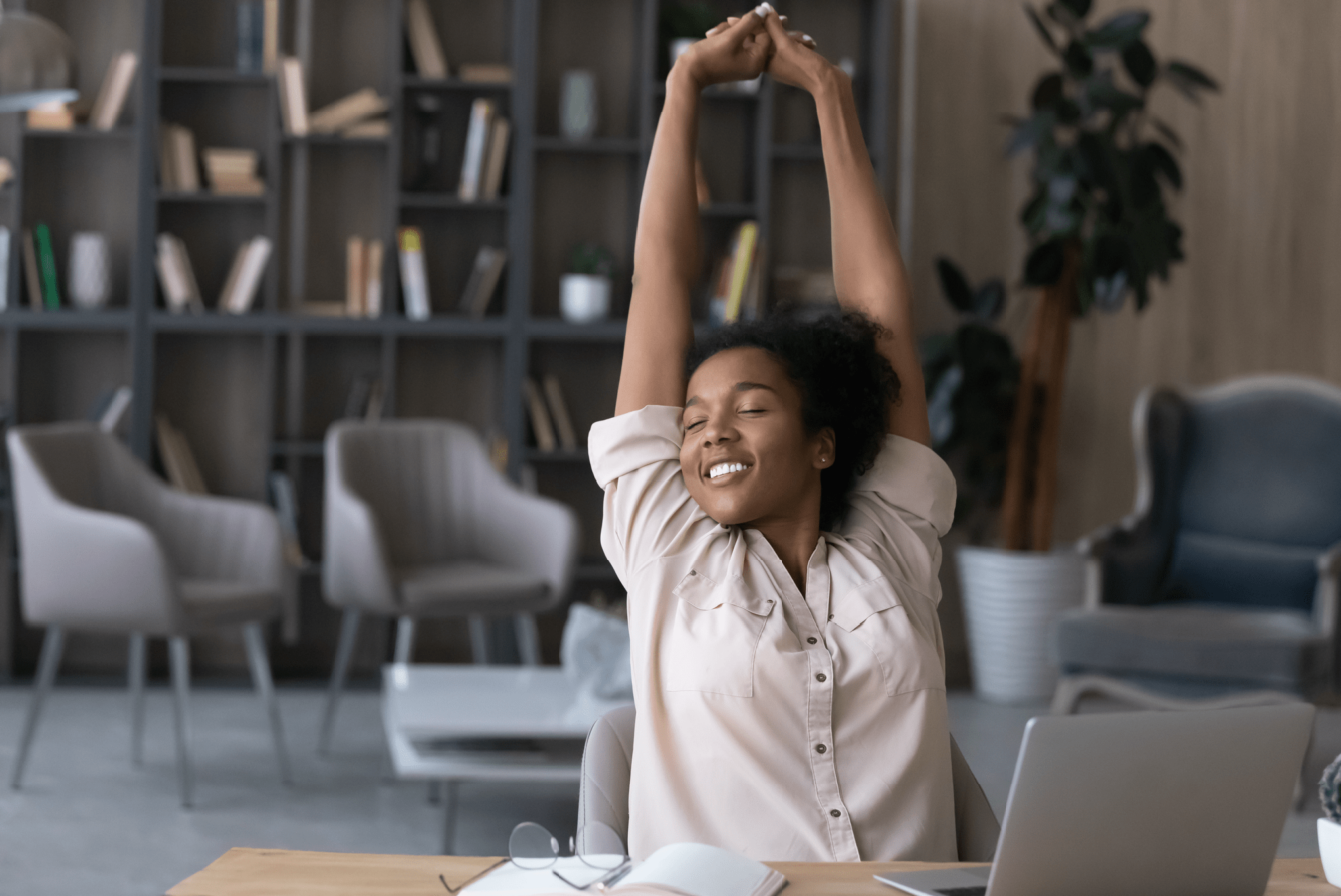
You don’t have to have a labor-intensive job to experience a workplace injury. Job-related injuries span all industries and professions. Poor posture, repetitive motion, and holding the same position for too long can cause or worsen certain musculoskeletal disorders. According to OSHA, work-related musculoskeletal disorders account for more than 30% of all nonfatal occupational illness and injury claims every year in this country. Stretching is a simple and effective way to combat these painful conditions. Here are the best workplace stretches for desk workers and other employees.
Tech neck (or text neck) is not an official medical diagnosis, but it is a real condition that reflects our dependence on technological devices. Tech neck refers to pain, stiffness, and injuries that develop as a result of craning the head and neck to look at a phone, tablet, or other devices.
Over time, this unnatural posture can cause the chest muscles to shorten and the muscles in front of the neck to lengthen. This shift puts added spinal pressure on the neck.
Symptoms of tech neck include:
Workplace stretches have several benefits. Research shows that movement throughout the workday is good for employees’ mental and physical health and wellness. Stretches for computer workers and other types of employees increase range of motion and flexibility and reduce stiffness and pain. They may decrease the risk of sprains and strains and improve blood flow to enhance mental alertness and reduce stress and anxiety.
Upper Trap Stretch
The upper trapezius muscle runs from the base of the neck and extends across the upper back to the shoulders. People who work on the computer or perform reaching motions for long periods of time to be tight in the upper trap which runs along the side of the neck into the tops of the shoulders. Trap stretches help to ease this tension and improve shoulder mobility.
Pec Stretch
The pectorals are a group of muscles that connect the front of the chest to the bones of the upper arms and shoulders. Tight pecs are a byproduct of round-shouldered posture which is common for people who work with computers and other devices for hours at a time. Stretching these muscles helps lengthen and the chest muscles to encourage healthy posture.
Back Extension
Back extensions are quick and simple workplace stretches that focus on the low back and muscle groups that help extend, support, and protect the spinal column and the back overall. They “train” the lower back muscles to maintain the spine in a healthy position and are good for people who do a lot of bending and lifting.
Hip Flexor Stretch
The hip flexors are a group of muscles located toward the front of the hip. They allow the hips to flex and the knees to bend to the hips. Too much sitting tends to shorten and tighten these muscles causing poor posture, tightness in the lower back and front of the hip, and reduced range of motion in the hips.
Wrist Flexor and Extensor Stretches
Certain arm movements can expand and contract the muscles in the wrist joint, forearms, and fingers to improve flexibility and range of motion in these structures. They are beneficial for anyone whose occupation puts undue stress on the wrist. Office work, transportation, construction, cosmetology, and food preparation are just a few of examples of jobs that tax the wrist joint.
Stretching should feel good and never cause discomfort. Avoid holding your breath and just breathe as you normally do through the stretches. Only go as far as is comfortable. With each stretch, you’ll begin to feel more flexible and refreshed.
A good rule of thumb is to stretch for 5-10 minutes for every hour of work. The workplace stretches we’ve provided don’t require much space and can be done right at your desk or workspace.
Now that you are familiar with some of the best stretches for office workers and other professionals, let’s focus on your sitting posture. Proper alignment of your head, neck, and spine is essential for avoiding tech neck and other aches and pains that come with hunching over a computer for hours at a time.
First, choose a chair that supports the natural curves of the spine. Use a small, rolled towel or lumbar pillow to support the lower back. Adjust the chair height so that your feet rest flat on the floor (or on a footrest.) Keep your ears, shoulders, and hips aligned and your knees bent at a 90-degree angle.
Your computer monitor should be approximately 18-24 inches from your face. The top portion of the monitor should be at eye-level. Make sure your head is not protruding forward. This often happens without noticing and can lead to considerable neck and back pain. Every inch that your head moves forward places an extra 10 pounds of pressure on your neck!
Interrupt your screen time with quick office stretches and short walks. If you tend to get caught up in work, set reminders on your phone or watch. As you become more aware of how you sit, stand, and move at work, you may experience less pain and even feel more alert and productive!
If you experience an occupational injury, report your condition to your employer and ask your healthcare provider about a referral or opt for a self-referral for a physical therapy clinic near you.